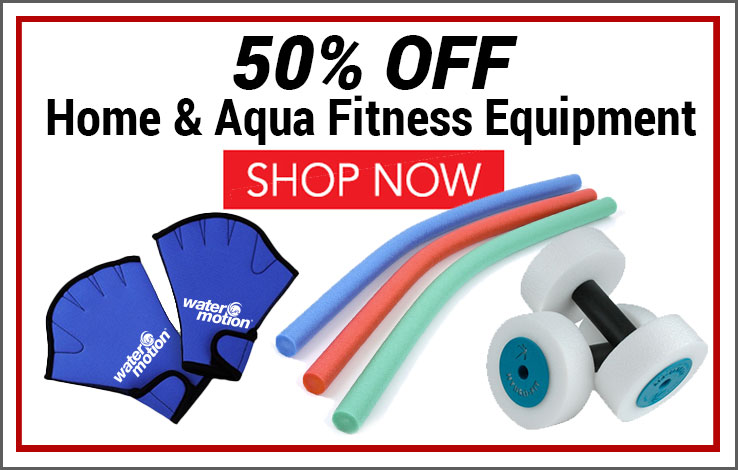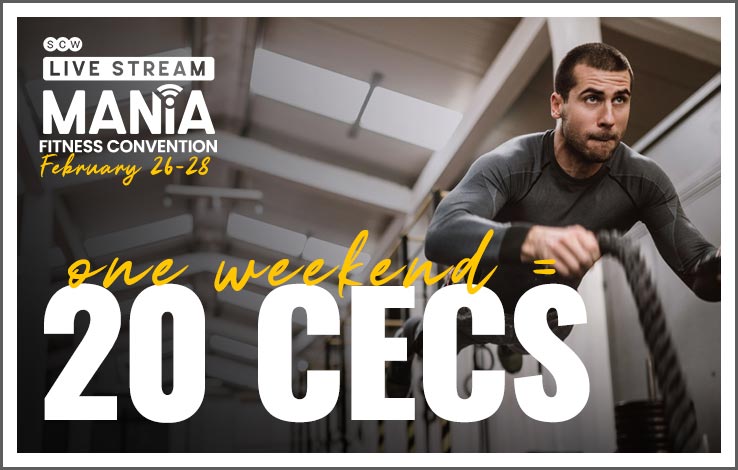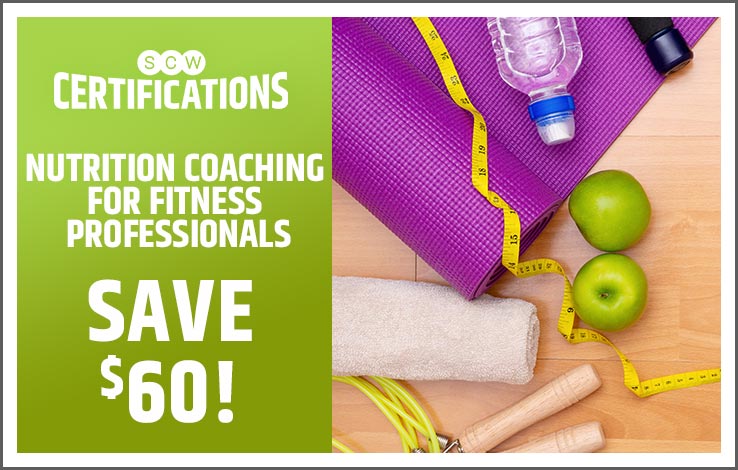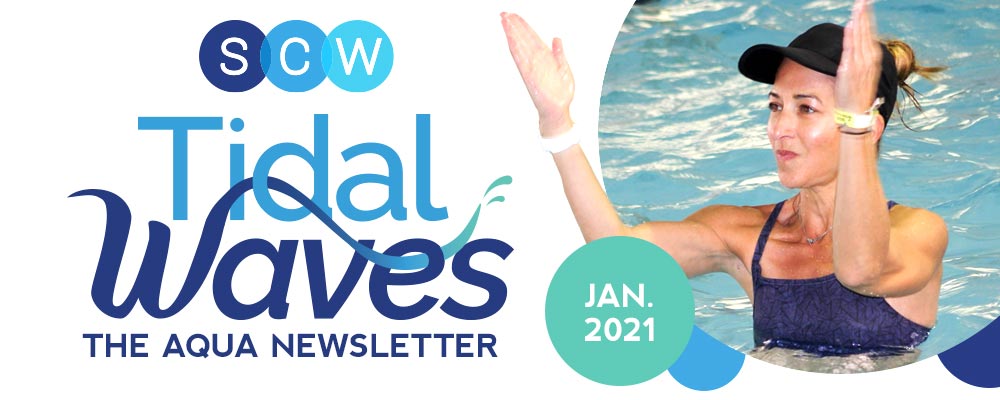
Tidal Waves
January 2021
The Aqua Newsletter from SCW
Revive That Tired Routine| The Importance of Including Recovery in Your Fitness Routine | Instructing the Aging Population | 10 Tips for a Long Teaching Career | Dairy-Free Spinach & Artichoke Dip
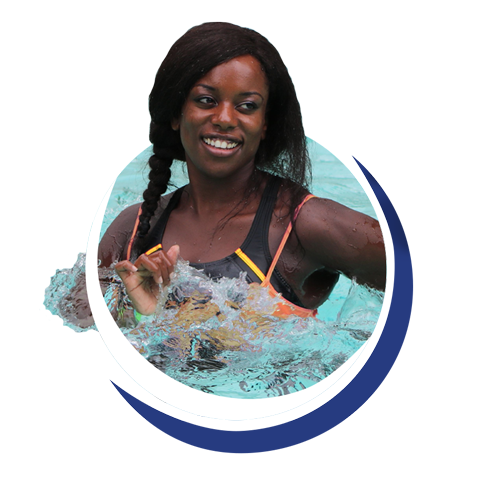
Revive That Tired Routine
by Kimberly Huff, MS, CSCS
Reprinted with permission from the Aquatic Exercise Association (AEA)
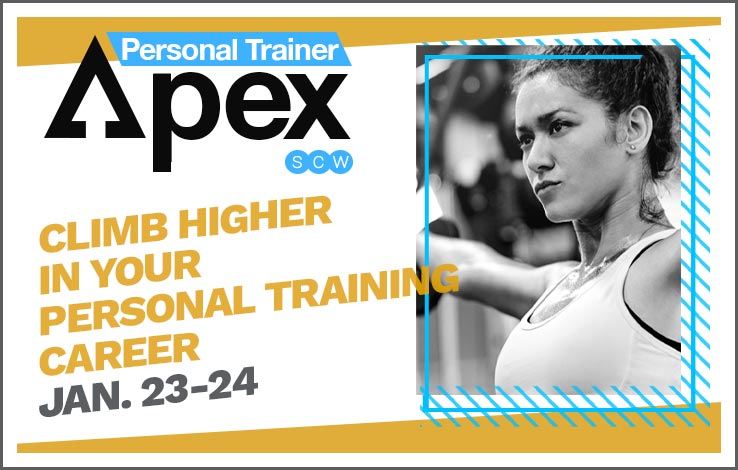 We know that changing the way we do traditional exercises is beneficial for the body. Changing the movement pattern will present a different challenge to strength, endurance, flexibility, coordination, agility, balance resulting in improvements in functional mobility. Recent research has shown that performing non-routine movements also provides a greater cognitive challenge than performing traditional exercises. It is safe to say that adding creative changes to regular exercises will be good for the body and the mind!
We know that changing the way we do traditional exercises is beneficial for the body. Changing the movement pattern will present a different challenge to strength, endurance, flexibility, coordination, agility, balance resulting in improvements in functional mobility. Recent research has shown that performing non-routine movements also provides a greater cognitive challenge than performing traditional exercises. It is safe to say that adding creative changes to regular exercises will be good for the body and the mind!
Unfortunately, teaching creative or more challenging movement patterns can be in itself a challenge, especially when working with older adults. The key to “Teaching Old Dogs New Tricks” is to make one simple change and allow time to master that change. After the class feels confident with that pattern, add a new pattern.
For example:
Repeat the following “traditional” pattern a couple times:
- Knee lifts with knees straight in front 8 cts (alternating R and L)
- Knee lifts with knees wide 8 cts (alternating R and L)
- Knee lifts with knees straight in front 8 cts (alternating R and L)
- Knee lifts with knees wide 8cts (alternating R and L)
- Knee lifts with knees straight in front 4 cts (alternating R and L)
- Knee lifts with knees wide 4 cts (alternating R and L)
- Knee lifts with knees straight in front 2 cts (this will be one R in front – one L in front)
- Knee lifts with knees wide 2 cts (this will be one R wide – one L wide)
*The final pattern may be challenging, so continue with the R in front – L in front – R wide – L wide until most people are comfortable.
Now add some creativity:
- R in front – L wide – R wide – L in front
*Continue with this pattern until most people are comfortable.
Some participants will transition from the “traditional” 8 knees in front – 8 knees wide – 4 knees in front – 4 knees wide – 2 knees in front – 2 knees wide very easily, others may find it challenging. The goal is to provide a challenge, while avoiding frustration.
Keeping the transitions easy is key to successfully changing “traditional” exercises into non-routine movement patterns. We can avoid frustration by slowing down. Moving at a slower pace will allow more time for the brain to process the instructions and signal the body to create the movement. The pace can be increased once the participants are comfortable with the new movement pattern.
Some participants will easily flow from the R in front – L in front – R wide – L wide pattern into the final pattern of R in front – L wide – R wide – L in front pattern, while other will find it confusing. Once again, slowing the pace will give them time to learn the new pattern. Another option is to break down the pattern even further.
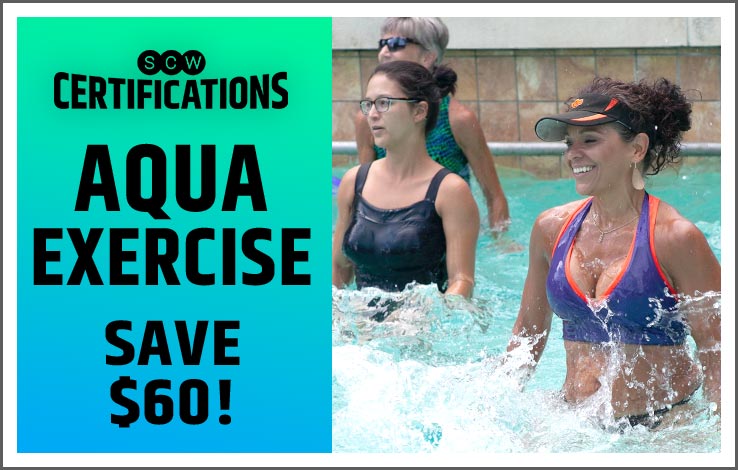 Return to the previous pattern:
Return to the previous pattern:
- R knee in front – L knee in front – R knee wide – L knee wide
*Give them time to feel confident with this pattern again
Now change to:
- R knee in front – L knee wide for 8 cts
- R knee wide – L knee in front for 8 cts
- R knee in front – L knee wide for 4 cts
- R knee wide – L knee in front for 4 cts
- R knee in front – L knee wide for 2 cts
- R knee wide – L knee in front for 2 cts
Continuing with the final pattern, you are back to R in front – L wide – R wide – L in front
Adding creative challenges to “traditional” movement patterns is beneficial for physical and cognitive function. Some participants will be able to make the transitions easily, while others may get frustrated and revert back to the familiar pattern. Performing the familiar pattern is OK, but it will not result in functional improvements. It is important to present the changes in a way that limits frustration and allows participants the chance to develop confidence with the new movement pattern. Developing confidence with movement will carry over to activities of daily living and improve overall mobility.
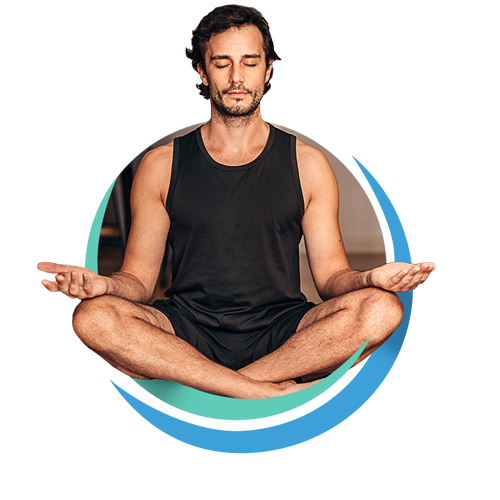
The Importance of Including Recovery in Your Fitness Routine
by Christine Alexander
High-Intensity Interval Training has been a popular format in all kinds of group exercise classes, including water fitness classes, and for good reason. HIIT has been shown to improve blood pressure, cardiovascular health, insulin sensitivity, cholesterol profiles, and abdominal fat and body weight. The American College of Sports Medicine recommends at least 30 minutes of moderate-intensity exercise five days a week, or 20 minutes of high intensity exercise three days a week. What is not to love about being able to cross exercise off your “to-do” list in less time?
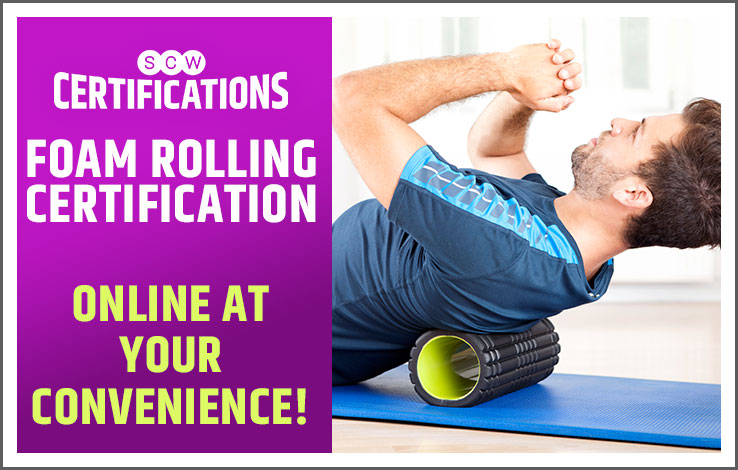 Water fitness professionals now realize that constantly pushing your body across the anaerobic threshold can lead to fatigue, burn out and overuse injuries. It is important to include some time for recovery to allow the body to rest and repair any microtrauma suffered during the previous months or weeks of training and avoid a cumulative injury. This does not mean canceling class, of course. But it does mean planning so that your class includes days of lighter intensity. One technique for achieving optimal fitness, that includes periods of active recovery, is periodization.
Water fitness professionals now realize that constantly pushing your body across the anaerobic threshold can lead to fatigue, burn out and overuse injuries. It is important to include some time for recovery to allow the body to rest and repair any microtrauma suffered during the previous months or weeks of training and avoid a cumulative injury. This does not mean canceling class, of course. But it does mean planning so that your class includes days of lighter intensity. One technique for achieving optimal fitness, that includes periods of active recovery, is periodization.
Periodization is a training cycle used by athletes to achieve optimal development in all aspects of fitness. Athletes arrange their cycles so that they achieve peak fitness during the season of their sport. Your water fitness class participants may not be elite athletes, but it takes a certain amount of fitness to perform the activities of daily living. Why not train like athletes for the sport of daily life?
The periodization cycle has four stages. The first stage is the Base Phase, or what I like to call the Preseason, in keeping with the athletic theme. The second stage is the Build Phase or Transition Season. The third stage is the Power Phase or the season of Peak Fitness. The final stage is the Active Recovery Season. If you are using periodization as an annual plan, each season will last 2-4 months, but you can also arrange it as a 6-month, 3-month, or one-month cycle. Using periodization requires advance planning on the part of the instructor so that the exercise progression will be effective.
The focus of the Preseason is improving posture, learning to perform the exercises with good form, increasing range of motion, and using the properties of the water to create an overload. Classes can consist of cardiorespiratory training and interval training, using an increased range of motion as your intensity variable. Larger moves require more effort, especially when maintaining the same cadence as the base move. Include strength training without equipment.
 The focus of the Transition Season is improving the quality of participants’ exercise by asking them to pay attention to how their arms and legs are moving water. As their awareness grows, they will have more control over their body movements. Being able to manipulate the water intentionally improves stability, helps control travel, and allows participants to speed up their movement to increase intensity. Classes can consist of cardiorespiratory training and interval training, using speed as your intensity variable. Faster moves require more effort when maintaining a full range of motion. Include strength training using equipment.
The focus of the Transition Season is improving the quality of participants’ exercise by asking them to pay attention to how their arms and legs are moving water. As their awareness grows, they will have more control over their body movements. Being able to manipulate the water intentionally improves stability, helps control travel, and allows participants to speed up their movement to increase intensity. Classes can consist of cardiorespiratory training and interval training, using speed as your intensity variable. Faster moves require more effort when maintaining a full range of motion. Include strength training using equipment.
The focus of the season of Peak Fitness is to increase power and thus push the intensity into the anaerobic zone for short periods. Classes can consist of cardiorespiratory training and interval training, using acceleration as your intensity variable. Acceleration can mean pushing off the floor in a rebounding or plyometric move. But it can also mean pushing hard against the water’s resistance in a power move. Pushing harder can slow the speed of the exercise down while at the same time increasing the effort. Include strength training using equipment, especially buoyant and rubberized equipment. Plunge the buoyant equipment quickly toward the floor or pull the rubberized equipment quickly away from the anchor point in a concentric contraction. Then pause and slow down the return movement to focus on the eccentric muscle action.
Active recovery classes are interspersed throughout the first three seasons giving participants a break from training. But you also need to have an Active Recovery Season at the end of the Peak Fitness season. This allows the body to rest, to repair any microtrauma it may have suffered, and to consolidate fitness gains before beginning the next training cycle. Classes can consist of light cardiorespiratory training, core strength training, and fun activities such as games and relay races.
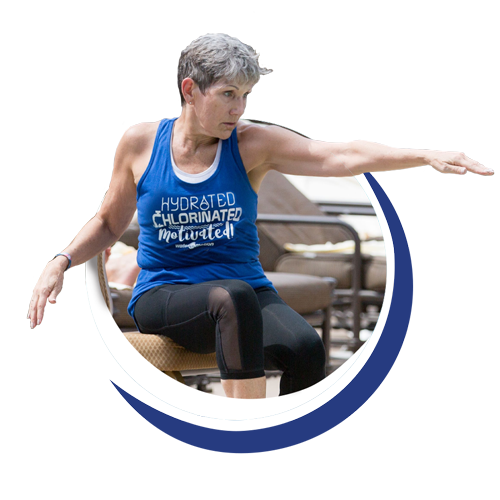
Instructing the Aging Population
by Ann Gilbert & Connie Warasila
By the year 2030, the number of individuals 65 years and older will reach 70 million in the USA alone. In addition, those 85 and older will then be the fastest growing segment of our population. The time is now to prepare for the health, functional capacity, quality of life and independence in this incredibly important population. We need to do this as a facility, to adjust and accommodate ourselves to this population and as health and fitness professionals we need to be able to service this population.
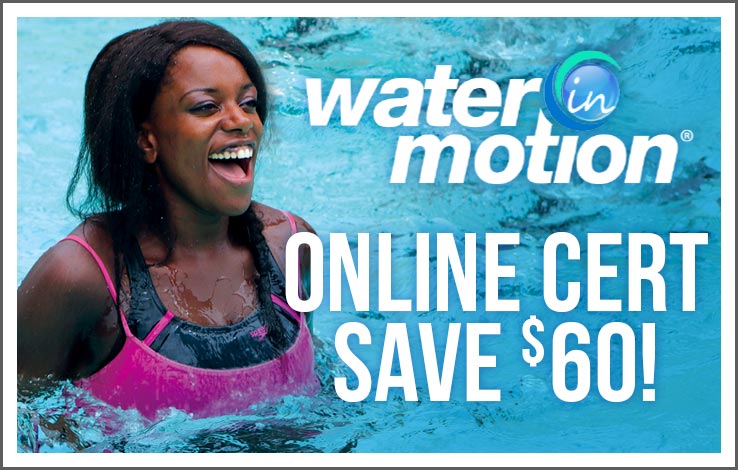 Since most exercise programs are not designed to address the specific needs of those 65 years and older WATERinMOTION® Platinum was created. What makes WATERinMOTION® Platinum unique from WATERinMOTION® Original is that it:
Since most exercise programs are not designed to address the specific needs of those 65 years and older WATERinMOTION® Platinum was created. What makes WATERinMOTION® Platinum unique from WATERinMOTION® Original is that it:
- Uses slower music more intergenerational music
- Has longer repetitions
- Has 8 tracks and 1 bonus track instead of 10 and 1 bonus track
- Focuses more on balance
- Incorporates more cognitive challenges because as the body ages so does the mind
- Focuses more on fast twitch muscle fibers because as we age those muscle fibers deteriorate at a much faster rate than our slow twitch fibers
- Focuses more on activities of daily living (ADLs) to make the lives of our participants easier on a daily basis
The three M’s (A, B, C)
When teaching WATERinMOTION® Platinum there is a certain “finesse” that all instructors must have to be successful. Each WATERinMOTION® track is broken up into 3 segments: verse (V), chorus (C), and bridge (B) and then repeated 3 times (A, B, C). This makes it easier not only for your participants to learn but for the instructor to teach. Once you have learned V-C-B, you simply have to repeat it. However, in each segment the instructor must focus on a different emphasis of cueing, these are the 3 M’s.
The three M’s are:
- Move
- Muscle
- Motivate
What this means is that during your first segment (V1, C1, B1) you simply want to show and tell your participants how to do the movements. During your second segment (V2-C2-B2) you want to continue showing and telling your participants how to do the movements, but you also want to show and tell your participants what muscles they should be using, how they should be using them, and what they should be feeling. During your third segment (V3-C3-B3), you take it all home. At this point your participants will know what movement is coming, how to do it, and how they should be feeling. So, this is your chance to shine. Motivate your participants to up the intensity, add in their own flare, and really give it all they’ve got.
Longer Repetitions
There are 3 reasons we do longer reps in WATERinMOTION® Platinum:
Adapable:
We want to make sure that our program is comfortable for our participants and that we move at a slower pace. This can be done by doing an 8 count instead of a 4 count or a 16 count instead of an 8.
Achievable:
Developed a future without fear because the participants know they can achieve this class.
Accomplished:
The participants want to feel accomplished; which will give them a higher sense of self-esteem and success.
Another reason that we move slower in WATERinMOTION® Platinum is that the participants will need more time to get in the water, out of the water, to show particular movement patterns, or to address their specific needs.
We want to make sure that the music that we use focuses on the 50’s, 60’s, 70’s, and 80’s. So, that the songs are recognizable to the participants in the class. WATERinMOTION® Platinum uses hits of the time of our populations; which is proven to help retain them in class.
Also, instead of working at 140bpm, as in WATERinMOTION® Original, we are working at 130bpm. This gives our participants more time to get a wider range of motion, get the moves down, and even further reduce impact.
Balance Challenge
Because the participants are in water and the buoyancy of the water is supporting their joints, participants can practice balance movements that they may not feel comfortable doing on land. Because they are less fearful we can push our participants harder than if we did the same movements on land.
AREAS OF FOCUS IN WATERinMOTION® PLATINUM
Manual Dexterity
As we age, we being to lose the manual dexterity or ability to move our hands. The Arthritis Foundation states that aging populations should do exercises with their hands to reverse or decrease these effects and WATERinMOTION® Platinum integrates these exercises into the choreography to do just that.
Application of flexibility
It’s very important for us to focus on the application of flexibility as well. As we age we lose the ability to plantar and dorsi flex our foot. This is why as we age we shuffle and are more prone to falls.
Crossing the Mid-line
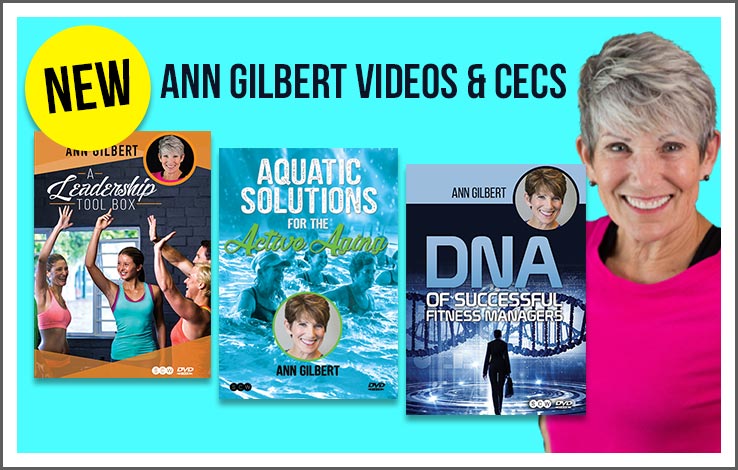 We must focus on not crossing the mid line when teaching or crossing the legs over. We do this because some people have less flexibility in the hip girdle or have had hip surgeries and we want to ensure that we stick to the Arthritis Foundation guidelines. People can cross if they feel comfortable but we must show them a proper example.
We must focus on not crossing the mid line when teaching or crossing the legs over. We do this because some people have less flexibility in the hip girdle or have had hip surgeries and we want to ensure that we stick to the Arthritis Foundation guidelines. People can cross if they feel comfortable but we must show them a proper example.
We must also ensure that we strengthen the adductors of the inner thigh because those muscles strengthen the knee joint to help with balance.
Shoulder Girdle
We must focus in our flexibility track to impress upon our participants the importance of retracting the head back, scapular retraction and depression; which will avoid the “rounded back” that we get as we age.
Challenge the body and the mind
Be aware that because your class will have different age groups, all with different cognitive levels, that you must challenge the group as a whole. This is one of the most important reasons to change the choreography quarterly because it provides both the physical and cognitive challenges needed to keep the body improving.
Cueing
We also need to be aware of how to cue to this population. Verbally, we are going to simplify our cueing by talking slower, annunciating, and being consistent. We also have to preview early and verbally cue sooner to help our participants follow the transitions easier. Because some of our instructors will be older, when visually cueing, it is important to demonstrate each movement while standing and while seated.
Fast Twitch Focus
Since we lose more fast-twitch muscle fibers as we age we want to focus on maintaining these by using more explosive movements, when applicable. And we want to focus on retaining our slow-twitch fibers in our cardio sections.
Activities of Daily Living (ADLS)
It’s important for our older adults and deconditioned populations to feel a sense of independence, strength, power and control. As instructors we must focus on stimulating our participant’s minds, giving them the ability to socialize and give them a sense of well-being and belonging.
Copy and paste this link to share video on social media: https://youtu.be/Ny7GzxCna6o
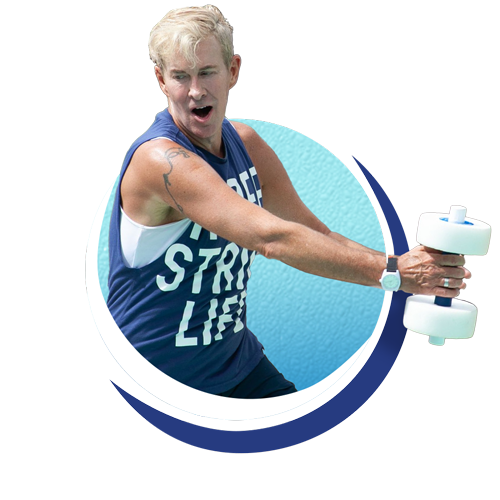
10 Tips for a Long Teaching Career
by Minda Kjar and Connie Warasila
Sure, you stay active and teach often, but are you practicing safe habits to insure you’ll be healthy and injury free to keep teaching for a long time? Well, how long is long, right? According to Jeff Nelson, author of The Longest Professional Sports Careers, “The average playing career for an NFL player is 3.5 years; the average MLB career is 5.6 years; the average NBA career is 4.8 years; and the average NHL career 5.5 years. Playing in one of the major four American sports takes a toll on a person’s body that is nearly unfathomable.” What is the average teaching career for a Certified Fitness Instructor?
 Not unlike professional sports, teaching for a long time can take a toll on you. If you have consistently led fitness classes during your adult life that could easily be 10+ years. You may even consider teaching a lifetime investment. Let’s estimate “long” to be a typical, adult-life career span from 18 – 65 years of age. That’s 47 years and a lot of jumping jacks! Continual, constant movement can take its toll on your physical body, relentless mentoring to participants can make havoc on your mental state and perpetual exposure to criticism can fatigue your emotional health. And now we even have to deal with continual, constant pandemic protocols. The following 10 tips guide your plan today to overcome the obstacles that could inhibit a full and long teaching career.
Not unlike professional sports, teaching for a long time can take a toll on you. If you have consistently led fitness classes during your adult life that could easily be 10+ years. You may even consider teaching a lifetime investment. Let’s estimate “long” to be a typical, adult-life career span from 18 – 65 years of age. That’s 47 years and a lot of jumping jacks! Continual, constant movement can take its toll on your physical body, relentless mentoring to participants can make havoc on your mental state and perpetual exposure to criticism can fatigue your emotional health. And now we even have to deal with continual, constant pandemic protocols. The following 10 tips guide your plan today to overcome the obstacles that could inhibit a full and long teaching career.
1. COACH:
Teach smart and safe. Learn to modify your movements. Be a better coach by using strong visual and verbal cues. Give options for high and low efforts. Depending on the program, you don’t have to jump the highest or load your bar with the most weight. A great instructor can keep the movement going by coaching, correcting and connecting with your class.
2. CROSS TRAIN:
Teach or train all aspects of fitness: Cardiovascular fitness, muscular strength and endurance and flexibility. Perform training activities in moderation and variation as to avoid overtraining.
3. RESPECT YOUR BODY:
Injury, illness and age can and will happen. Take the time to let yourself heal from injuries. Physical therapy is a must and will help you re- cover faster. Illness can range from a simple virus to chronic illness and cancer. Rest and take the down time you need to rehabilitate and cope. As your body ages it starts to break down and slow down. Acknowledge it and embrace it. You’ve earned every ache and pain. Every day is a blessing!
4. PRIORITIZE:
Find your limits. If you are feeling too busy and stressed out, you may have to cut back. Give up teaching classes or programs when you can’t cope either mentally or physically. Set priorities. Put the most important things in your life first. It’s ok to say NO.
5. REST:
Take breaks. Give yourself days off. Don’t overwhelm your schedule with too many classes. Take time for yourself, family and friends. It will re-energize you and keep you mentally and physically strong.
6. LEARN:
Educate yourself – about all aspects of fitness. Take workshops, attend fitness conventions and watch webinars. Do research and read articles. The more you know the better prepared you will be to deliver safe, effective classes to your participants, using the latest equipment, technology and movements.
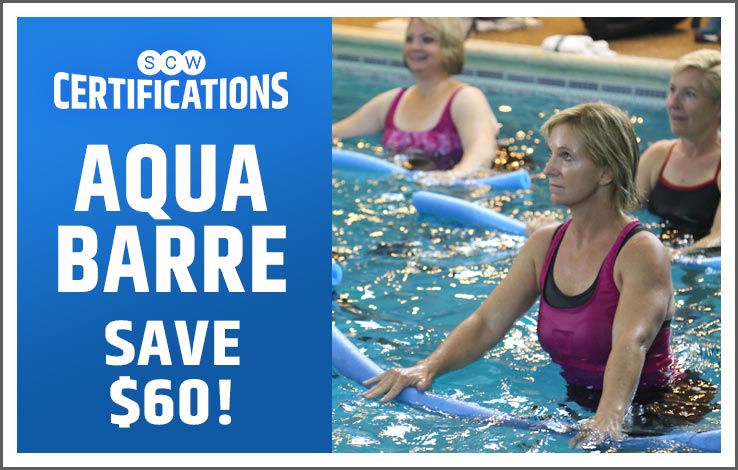 7. REACH:
7. REACH:
Challenge yourself. Try something out of your comfort zone. Learn a new program or take a new certification. It will keep your mind sharp and your body strong.
8. CRITIQUE:
Get evaluations and feedback on the classes you teach. Ask instructors in your club to attend your classes and give you AN honest critique. Film yourself teaching. Watch and see how you can improve. Send those videos to others for even further feedback. Criticism is sometimes hard to take. Use it to make yourself better! Take classes from other instructors. You will learn awesome cues and ideas. Sometimes you even learn what NOT to do.
9. SELF PRAISE:
Don’t be hard on yourself. You will teach a bad class now and then. Get up, dust yourself off and make a plan to be better! Not everyone’s body is an ideal model of physical fitness perfection. We all come in different shapes and sizes. Love yourself. Love others and it will shine through in your teaching.
10. HEALTHY HABITS:
Take care of your body. Eat well and hydrate. Sleep enough. Floss! Wash your hands and stay home if you’re feeling ill. Address rising stressors. Avoid unhealthy input: tobacco, alcohol, sugar, drama, etc. Create positive habits and routines.
Be conscientious. You will be stronger and healthier.
If you can incorporate these 10 tips into your life, then look forward to years of serving those who really need your expertise, energy and motivation. We fitness instructors offer such a valued service to so many in need. Just remember to fill your own cup first so you can pour out guidance for others.
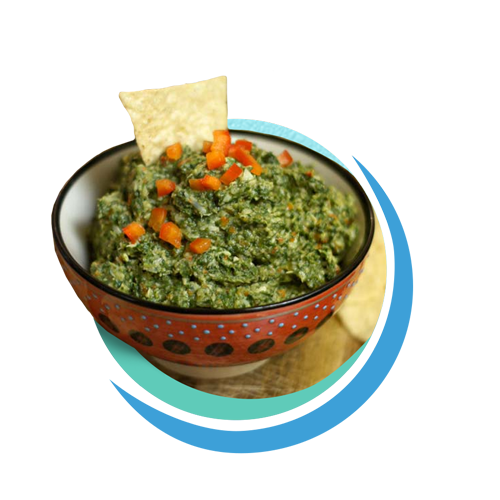
Dairy-Free Spinach & Artichoke Dip
Who doesn’t love spinach artichoke dip? How about a version without all the fat and cholesterol? With only 10 ingredients, you can make a savory simple dip to enjoy while at home with family.
- ½ tbsp olive oil
- 1 small yellow onion, sliced thin or diced
- 2-3 cloves garlic minced
- 1 can cannellini, great northern, or other white bean, rinsed and drained
- 12 ounce can or jar artichoke hearts, packed in oil or water
- 1 cup cooked spinach, from fresh or frozen
- 1 tsp freshly squeezed lemon juice
- ¼ tsp dried oregano
- ½ tsp fresh ground black pepper
- ¼ tsp salt, if using no sodium beans
- 1/8 cup cashews, blended in food processor to a grated parmesan consistency optional
INSTRUCTIONS
Heat oil in a pan over low-medium. Add garlic and onion, stir well and cover. Let cook 8-10 minutes, stirring occasionally to caramelize the onions. If onions stick to pan, add 1-2 tbsp water, stir and reduce heat to low.
Add beans, garlic and onions, lemon juice, oregano, and pepper to food processor. Pulse for 45-60 seconds or until well blended. If very thick at this point, add 1-2 tablespoons of liquid from the jar of artichokes and pulse another 15-30 seconds or until you achieve a creamy consistency.
Next add the artichokes and spinach. Pulse about 10-15 seconds or until well combined, but not so much that texture is lost.
Serve at current temperature or, for a warm dip, place in a ceramic serving dish and heat in the oven at 350°F for 5 or more minutes. If you are adding “cashew parmesan”, sprinkle on top before placing in the oven.
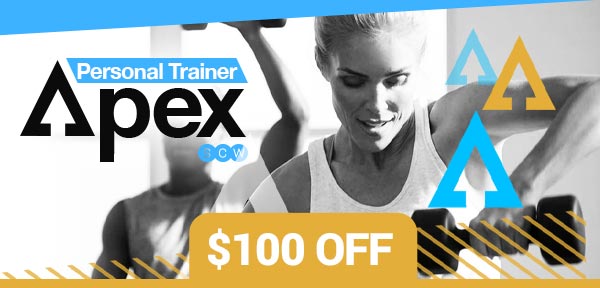
Personal Trainer Apex
January 23-24
Learn More Here
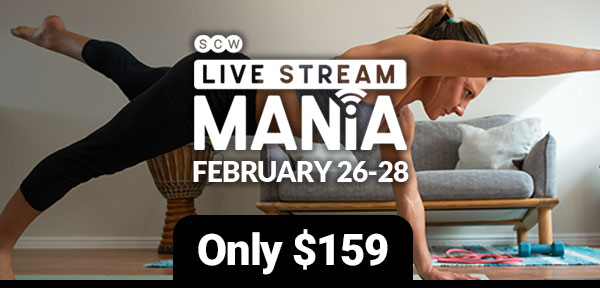
Live Stream MANIA®
February 26-28
Get MANIA NOW

SCW Online Certifications $50 OFF
Choose Cert & Use Code: CERT50

50% OFF Home Equipment Must-Haves
Shop the 50% Sale Here

Save $20 SCW OnDemand
Subscribe & Use Code: ONDEMAND20

20% OFF SCW Digital Videos
Choose Videos & Use Code: VIDEO20

$50 OFF 20 CEC Video Course Bundles
(Was $139, Now $89) or (Was $209, Now $159)
Choose Bundle & Use Code: VIRTUAL50

FREE Upcoming Webinars From SCW
Register FREE Here

